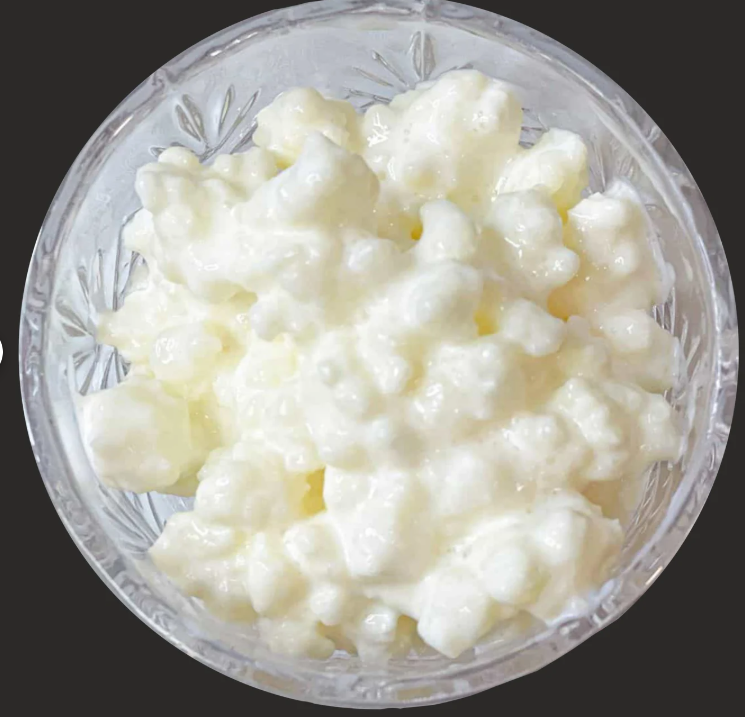Unlock the Incredible Health Benefits of Fermentation for a Healthier Lifestyle
Fermentation is not merely a traditional culinary technique; it is a transformative practice that has re-emerged in modern kitchens due to its profound implications for health and nutrition. This ancient method involves the use of microorganisms to convert sugars and organic materials into beneficial byproducts such as acids, alcohol, and gases. This fascinating biochemical process not only serves to preserve food but also significantly boosts its nutritional value. As we become increasingly aware of the vital link between gut health and overall well-being, the exploration of fermentation opens doors to achieving health goals and welcoming a more energetic lifestyle. Delve into the world of fermentation to enhance your wellness journey.
Understanding the diverse and intricate world of fermentation is essential for anyone interested in crafting DIY fermented foods. This process involves simple recipes that can positively impact gut health. Fermentation hinges on the metabolic actions of beneficial microorganisms, particularly bacteria and yeasts, which work together to transform ordinary ingredients into probiotic-rich products. Through fermentation, one can enjoy a wide array of foods, including sauerkraut, kimchi, and kombucha, each contributing unique flavors and specific health advantages. For example, the presence of lactic acid bacteria in these foods plays a pivotal role in restoring the balance of gut flora, which can lead to better digestion and a strengthened immune system.
If you prefer to absorb information through audio, feel free to click below and listen.
Maximize Your Health by Including Fermented Foods in Your Daily Meals
Integrating fermented foods into your daily diet comes with a wide array of benefits that are truly significant. These foods are packed with probiotics, which are essential for improving gut health, facilitating digestion, and strengthening your immune system. Furthermore, fermented foods enhance nutrient absorption; the fermentation process breaks down complex nutrients, making them more bioavailable and easier for our bodies to utilize. As you embark on your fermentation journey, it's crucial to start with the right equipment—such as jars, weights, and airlocks. Just as important is mastering hygiene and temperature control during fermentation, as these factors are critical to ensuring your food is safe and your culinary efforts are successful.
Diving into the various types of fermentation reveals an exciting array of flavors and culinary possibilities. For example, lactic acid fermentation gives a tangy flavor to foods such as pickles, while ethanol fermentation is primarily applied in brewing alcoholic beverages. Additionally, acetic acid fermentation is essential for vinegar production, showcasing yet another dimension of fermentation techniques. Each method has its own unique appeal, offering endless opportunities for creativity and experimentation in your kitchen.
Prioritize Safe Fermentation Practices to Achieve the Best Results
Ensuring safety during the fermentation process is crucial for successful outcomes. While the steps involved in fermentation are generally straightforward, risks like contamination and spoilage can arise if proper practices aren't followed. Learning how to effectively sterilize your equipment and monitor the fermentation progress is vital. Also, it's important to recognize signs of spoilage, whether you're a novice or a seasoned fermenter. By adhering to established safety guidelines, you can significantly minimize the risk of spoilage and contamination, making your fermentation experience both safe and enjoyable.
Key Ingredients for Consistent Success in Fermentation
Make the Right Choice: Why Organic Vegetables are Crucial for Successful Fermentation
Choosing the right ingredients is essential for achieving successful fermentation results. Fresh, organic vegetables—like cabbage, cucumbers, and carrots—are excellent choices. These vegetables naturally contain high levels of sugars and retain sufficient moisture, which are both critical for effective fermentation. Opting for organic produce brings additional advantages, as it often harbors more beneficial bacteria necessary for successful fermentation. By sourcing ingredients from local farmers' markets or cultivating your own, you enhance the flavors of your ferments while simultaneously supporting sustainable farming practices that benefit our ecosystems.
Understanding Salt: Achieving the Perfect Brine for Successful Fermentation
Salt is a fundamental component of the fermentation process, functioning as a natural preservative. It helps draw moisture from vegetables, creating a brine that encourages the growth of beneficial bacteria while inhibiting harmful microbes. Finding the right salt balance is critical; too much salt can impede fermentation, while too little can lead to spoilage. Feel free to explore various types of salt, such as sea salt or Himalayan pink salt, as these alternatives can add unique flavors to your ferments and enhance their overall appeal.
Enhance Your Fermentation with Spices and Herbs for a Flavorful Twist
Incorporating a range of spices and herbs into your fermentation process can greatly enhance your culinary experience, adding layers of flavor and complexity. For example, adding spices like dill, garlic, and mustard seeds can elevate a basic batch of sauerkraut into a gourmet creation. Similarly, herbs such as bay leaves and peppercorns can impart subtle aromatic qualities, enriching the overall taste profile of your ferments. The flexibility of fermentation allows you to customize your creations to reflect personal preferences or draw from global culinary traditions.
Grasping the role of each ingredient is essential on your fermentation journey. A well-balanced blend of flavors, textures, and aromas will not only make your DIY fermented foods enjoyable but also beneficial for your health. These elements work cohesively to support your well-being while tantalizing your taste buds. When exploring global cuisines, the possibilities are truly endless, providing ample opportunities to draw inspiration from diverse cultures and their traditional fermentation methods.
Global Ingredient Exploration: Fermenting with Local and Exotic Produce
As you gather your ingredients, consider the geographical diversity of vegetables available in different regions. For instance, cabbage is a staple in many European ferments, while tropical regions often utilize fruits like mangoes or papayas, which possess unique fermenting properties. By exploring ingredients from around the world, you can unlock exciting new flavors that connect with your culinary heritage or introduce you to completely fresh taste experiences.
Master Essential Fermentation Techniques for Delicious Homemade Foods
Lacto-Fermentation: The Go-To Method for Optimal Gut Health
The fermentation landscape offers a variety of techniques that cater to diverse tastes and preferences. One of the most renowned methods is lacto-fermentation, which utilizes lactic acid bacteria to preserve and ferment vegetables. This technique yields a broad spectrum of flavors and textures, resulting in beloved staples like sauerkraut and kimchi. The tangy notes produced by lactic acid impart a distinctive character to these dishes, earning them admiration from food enthusiasts worldwide.
Water-Brine Method: Crafting Crunchy Pickles with Your Unique Flavors
Exploring the water-brine fermentation method reveals an efficient technique that involves submerging vegetables in a saltwater brine. This method is particularly effective for crafting pickles and other crispy ferments, helping the vegetables retain their crunch while developing flavors over time. The fermentation duration varies from a few days to several weeks, depending on ambient temperature and your flavor preferences. This approach allows for ample experimentation, enabling you to mix and match various spices and flavors to suit your palate.
The dry-salting technique is another straightforward yet effective fermentation method. By directly sprinkling salt onto vegetables, you can draw out their natural juices, creating the brine necessary for successful fermentation. This technique works especially well for leafy greens, promoting moisture release and forming the brine essential for effective fermentation. Its simplicity makes it accessible for beginners while offering numerous opportunities for flavor enhancement and creativity.
Fermenting Beverages: Create Delicious Kefir and Kombucha at Home
Fermentation techniques such as kefir and kombucha offer exciting alternatives that transform milk and tea into probiotic-rich beverages. These methods utilize kefir grains or a SCOBY (symbiotic culture of bacteria and yeast) to produce fizzy, tangy drinks loaded with health benefits. Kombucha, in particular, has surged in popularity globally due to its refreshing, effervescent nature, which supports gut health and overall wellness.
Your choice of fermentation techniques should align with your personal tastes and culinary aspirations. Each method presents distinctive flavors and benefits, allowing you to immerse yourself in the diverse world of DIY fermented foods: simple recipes tailored for enhanced gut health. Embracing these techniques empowers you to create a wide array of delicious fermented foods, enriching your meals while supporting your health.
Explore Popular Fermented Foods to Enrich Your Culinary Experience
Sauerkraut: A Timeless Tangy Classic
Among the extensive range of fermented foods, sauerkraut stands out as a cherished staple. Crafted from finely shredded cabbage mixed with salt, sauerkraut undergoes fermentation to develop a tangy, probiotic-rich condiment. This classic dish has origins in various cultures, from Germany to Eastern Europe, with each region adding its signature flair. Sauerkraut can be enjoyed in numerous ways—on sandwiches, in salads, or as a side dish—offering versatility and allowing you to reap its health benefits in countless forms.
 Kimchi: Bold, Spicy, and Rich in Probiotics
Kimchi: Bold, Spicy, and Rich in Probiotics
Conversely, kimchi is a spicy Korean ferment that has captivated food enthusiasts worldwide. Typically made from napa cabbage, radishes, and a vibrant mix of seasonings, kimchi delivers an exhilarating zing to the palate. The fermentation process not only amplifies flavors but also offers a plethora of health benefits. Packed with probiotics and vitamins, kimchi is an outstanding choice for promoting gut health, while its bold, spicy flavors provide an exciting culinary adventure.
Dill Pickles: Irresistibly Crunchy and Zesty
Dill pickles, or pickled cucumbers, offer another delightful option in the world of fermentation. Their crunchy texture and zesty flavor make them a favorite for snacking and add a burst of flavor to various dishes. The pickling process involves soaking cucumbers in a brine solution, often enhanced with an assortment of spices and herbs. This method not only preserves the cucumbers but also transforms them into a delicious treat that elevates any meal.
Beyond the Basics: Discover Miso, Kefir, and Other Exciting Fermented Foods
Venturing beyond these popular choices unveils a diverse range of fermented foods waiting to be explored. Miso paste offers a tangy richness, while kefir provides a light, effervescent quality. Each fermented product features its unique flavors and health benefits. As you navigate the world of DIY fermented foods and simple recipes crafted for a healthier gut, take the opportunity to experiment with different techniques. This hands-on approach will help you discover what suits your tastes and lifestyle, while immersing you in the rich tapestry of flavors and traditions that fermentation has to offer.
Embracing these fermented foods not only enhances your health but also connects you to diverse global culinary traditions. Sharing these dishes with friends and family allows you to offer more than just delicious food; you introduce them to a rich blend of flavors and cultural practices, enriching your culinary journey in a meaningful way.
Embark on the Journey of Fermenting Fruits and Dairy Products
Fermented fruit chutneys provide a delightful way to incorporate the health benefits of fermentation into your meals while adding an explosion of flavor. By fermenting fruits like mangoes and apples with spices, you create zesty chutneys that are packed with flavor and pair beautifully with a variety of dishes. These chutneys offer a delightful tangy sweetness that enhances the overall profile of your meals, making them perfect accompaniments for curries, sandwiches, and cheese platters.

Probiotic-Rich Dairy: Easy Ways to Make Yogurt and Kefir at Home
Yogurt and kefir are two dairy products abundant in probiotics, delivering a range of health benefits. Fermenting milk with live cultures yields creamy, tangy yogurt that can be enjoyed in many ways—whether as a breakfast staple, a base for smoothies, or a refreshing dip. In contrast, kefir has a thinner consistency and a slightly fizzy quality, making it an excellent beverage choice for promoting gut health. Both yogurt and kefir can be easily made at home, allowing for creative experimentation with various flavors and ingredients to match your preferences.
Refreshing and Probiotic-Rich: Enjoy Fermented Fruit Juices
Fermented fruit juices introduce an exciting aspect of fermentation, enabling you to create healthy, fizzy beverages that are both refreshing and beneficial for gut health. These drinks can range from simple apple cider to unique combinations like ginger-pineapple or beet-carrot. Not only do they offer a delicious way to stay hydrated, but they also come packed with probiotic advantages. As you embark on your journey of fermenting fruits and dairy, you'll discover a variety of flavors and textures that can elevate your culinary creations.
The versatility of these ingredients allows you to adapt recipes based on seasonal produce, personal tastes, or cultural inspirations. Embrace the creativity inherent in DIY fermented foods: simple recipes designed for enhanced gut health, and indulge in the endless possibilities fermentation offers.
The journey of fermentation transcends mere food preservation; it celebrates a fusion of flavors, cultures, and health benefits. By incorporating fermented fruits and dairy into your meals, you pave the way for a more balanced diet while exploring the rich and diverse world of global culinary traditions.
Your Comprehensive Guide to Common Questions About Fermentation
What is the easiest fermented food for beginners to try?
 Sauerkraut is frequently recommended for newcomers because of its straightforward process and minimal ingredient requirements. All you need is cabbage and salt, making it an easily accessible project for anyone eager to dive into the fascinating realm of fermentation.
Sauerkraut is frequently recommended for newcomers because of its straightforward process and minimal ingredient requirements. All you need is cabbage and salt, making it an easily accessible project for anyone eager to dive into the fascinating realm of fermentation.
How long does it take for fermented foods to be ready for consumption?
The time required for fermentation varies significantly based on the type of food and environmental conditions. Typically, most vegetable ferments need about 1 to 4 weeks to develop their flavors, while dairy ferments such as yogurt may be ready within just a few hours to a day.
Can I use regular table salt for my fermentation projects?
While it is possible to use table salt, it is generally better to choose non-iodized salts like sea salt or kosher salt. These alternatives lack additives that could impede fermentation and can enhance the flavors of your ferments.
How can I recognize if my ferment has spoiled?
Signs of spoilage include unpleasant odors, unusual colors, or the appearance of mold. If your ferment emits a sour or rancid smell rather than a pleasantly tangy aroma, it is advisable to discard it to avoid potential health risks.
Are there health benefits associated with consuming fermented foods?
Absolutely! Fermented foods are rich in probiotics that can improve digestion, fortify the immune system, and boost nutrient absorption. They are also linked to a range of health benefits, including enhanced gut health and potential mood regulation.
Can I use the same techniques for fermenting fruits as I do with vegetables?
Definitely! Fruits can also be fermented, although the process may differ slightly due to their higher sugar content, which often leads to quicker fermentation. Fermented fruit chutneys or juices are popular options that yield delightful results.
Is it necessary to use a fermentation weight?
While using a fermentation weight is not essential, it is highly recommended. Weights help keep the vegetables submerged in the brine, minimizing the risk of exposure to air and potential spoilage.
Can I enhance the flavor of my ferments with herbs and spices?
Absolutely! Adding herbs and spices can significantly elevate the flavor and complexity of your ferments. Ingredients such as garlic, dill, and mustard seeds can impart distinctive tastes to your fermented creations.
What is the best method for storing my fermented foods after they are ready?
Once fermentation is complete, transfer your fermented foods to airtight containers. Store them in the refrigerator to slow down the fermentation process, which helps preserve their flavors and health benefits for a longer duration.
Can I ferment non-dairy milk?
 Yes, non-dairy milk can be fermented to create delicious plant-based yogurts. By using options like coconut, almond, or soy milk along with suitable starter cultures, you can produce a probiotic-rich alternative to dairy.
Yes, non-dairy milk can be fermented to create delicious plant-based yogurts. By using options like coconut, almond, or soy milk along with suitable starter cultures, you can produce a probiotic-rich alternative to dairy.
Join us on Facebook for More Tips and Recipes!
The Article: DIY Fermented Foods: Easy Recipes for a Healthier Gut appeared first on https://janestevensnutrition.com
The Article Fermented Foods DIY: Simple Recipes for Gut Health Was Found On https://limitsofstrategy.com

